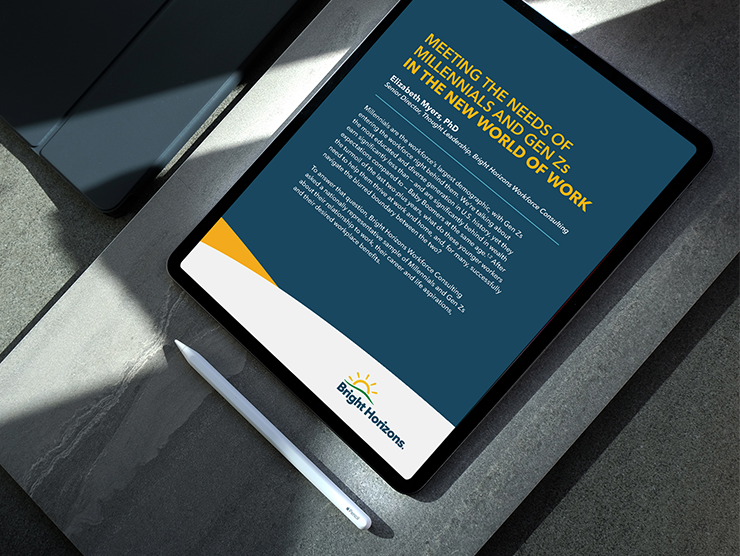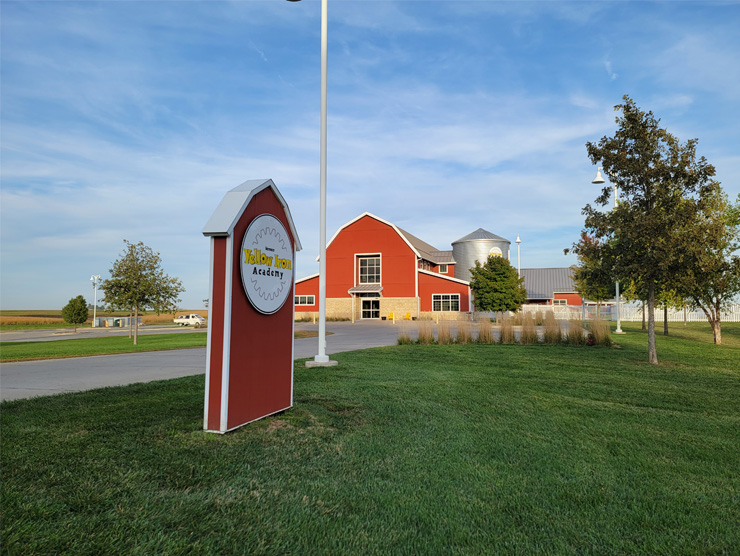Recently, a business writer summed up the economy by declaring the end of the employee’s market.
“Workers,” read the headline, “have lost their leverage.”
But have they really?
Not if you look at the bigger picture.
It’s true, job openings are on the decline – down 1% from December 2022. But so is unemployment, settling at a 53-year record low of 3.4%. More fascinating is what continues to hold its ground -- the quit rate. Despite the drumbeats of recession, quits, at 2.5%, have only modestly diminished since the Great Resignation peak in November 2021. MSNBC calls it a job market even experts can’t quite explain, with layoffs in the news even as millions of jobs go unfilled. As one company leader said glumly, “It’s just still so hard to find people.” In short, this is not your old-school talent adjustment.
What gives? A hint can be found in Microsoft's Work Trend Index – where nearly half of employees said they’ll likely be putting family before job. That’s a big shift from the before-COVID period, when prospective parents told our Modern Family Index (MFI) they were actually putting jobs first in decisions about when to have children. And it signals an important shift: that years of literally living in survival mode seems to be changing how people think about jobs. It’s a whole new world of work out there, where people are standing firm on family priorities, and trading in jobs that compromise the “life” part of the work-life equation.
“We’re not the same people that went home to work in early 2020,” reads Microsoft’s Work Trend Index. “The collective experience of the past years has left a lasting imprint, fundamentally changing how we define the role of work in our lives.” It’s playing out with two sides crashing into each other: employees wrestling to hold on to pandemic-era work concessions, employers struggling with a volatile market in which the number of new jobs continues to rise, and a talent market that’s defying all odds.
That should have HR thinking carefully about their next move. Basing strategy on historic ebbs and flows is a risk because it ignores where we’ve been the last three years, and what employees have done to keep businesses afloat. Recognizing the change to employees themselves, on the other hand, is a chance to put a stake in the ground as an employer who gets it. That kind of brand elevation is the kind that lasts, paying off in committed people through any economy. The key is to adjust your approach based on the workforce right now.
Know who your employees are: The youth-obsessed office is a thing of the past. That’s because even as Gen Z and Millennials may get all the press, the youth-centric workforce is a thing of the past. Not only have Millennials (still our largest group) moved past the fresh-faced new kids stage (the oldest have passed 40!), newcomers (more accurately, the formerly retired) have returned, putting five generations (Gen Z, Millennials, Gen X, Boomers, and the silent generation) side by side under our roofs. That won’t be answered with foosball tables and all-you-can-eat pizza, but rather with a thoughtful and flexible approach to rewards that can adjust to meet everyone.
Reinforce, don’t regress: What did we learn about flexibility these last few years? Just this: that it’s good for people. That’s a lesson we want to hold on to, especially since flexibility in our most recent MFI was closely equated with job fulfillment; and fulfilled employees were half as likely as the unfulfilled to be planning an exit. The takeaway: it’s better to build on what worked during the pandemic than jettison what no longer feels necessary.
Take on trouble spots: Child care issues cost the economy $120 billion annually – double just a few years ago. The shortages aren’t doing much for working parents either, driving many to exit jobs because they can’t find care. Addressing the issue from all sides (providing full time and occasional care) solves both the practical problem that keeps a key demographic from work, and a stress issue that burns them out – plus it elevates your brand. “Not only do working parents want more help from their employer when it comes to child care—like onsite child care facilities,” wrote SHRM recently after Hormel Foods became the latest to break ground on their own child care center, “but data shows a big employer advantage to offering such a benefit: Employee absences and job turnover decline when businesses provide child care.”
Beware of blind spots: Employers across industries are vocal about return to office. But an interesting takeaway from our current MFI is that employees in offices report having fewer benefits than colleagues working at home. That’s a big miss, especially since working parents tell our MFI they recognize the social value of the office, meaning they might be open to hybrid work. But they’d need help to get there. That’s something employers will need to work on.
Help people see jobs beyond today: The rise of the machines is on everybody’s minds – and not in that, “let’s grab the popcorn and watch a movie” kind of way. Employers are worried about AI-related gaps; employees are worried about robot-fueled unemployment. Both know new tech creates many new essential jobs that will need to be filled. So the middle ground is a learning curve where employers make paid tuition and training a focal point of HR. The extra benefit? Confidence in careers plays into desires across the board, notably newcomer Gen Z who value career stability above all else.
There’s one more takeaway. Current BLS data only tells you what’s happening in the economy right now. But business leaders need companies that can outlast whatever comes next. So your talent strategy needs to be designed that way – to take employees through highs and lows. People remember those companies – the ones that stayed consistent throughout. It’s why it’s wise to look at the last four years of work evolutions as smart fixes that served employees (and so the business) well, and not as temporary punts that need to be reversed the moment the economy does. One law firm launched a robust benefits strategy around the time of the dot-com bubble burst. They’ve since landed on the Fortune list 23 years straight – all while ably navigating The Great Recession and the pandemic, among other events. That’s not an accident. Employees noticed the commitment and stuck with them.
Says one attorney employed by the firm, “It shows that the firm cares about us as entire people.” That kind of commitment will continue to be important, especially given what we now know about the workforce.
"Post-pandemic, there's a general sense that employees have less tolerance for unhealthy workplace cultures," Glassdoor’s chief economist told Business Insider recently. "We know that dissatisfied employees have wandering eyes, and it's all the easier for them to pursue those opportunities now as remote interviewing has become commonplace in many industries." Plus, he added, “Employers who are not keenly attuned to the quickly shifting sands of the market, could unexpectedly find themselves reliving the Great Resignation the minute the market turns.”
So no, even as the market changes, employees haven’t given up their leverage. But as that law firm proves, tending to employees with care will outlast any economy.




